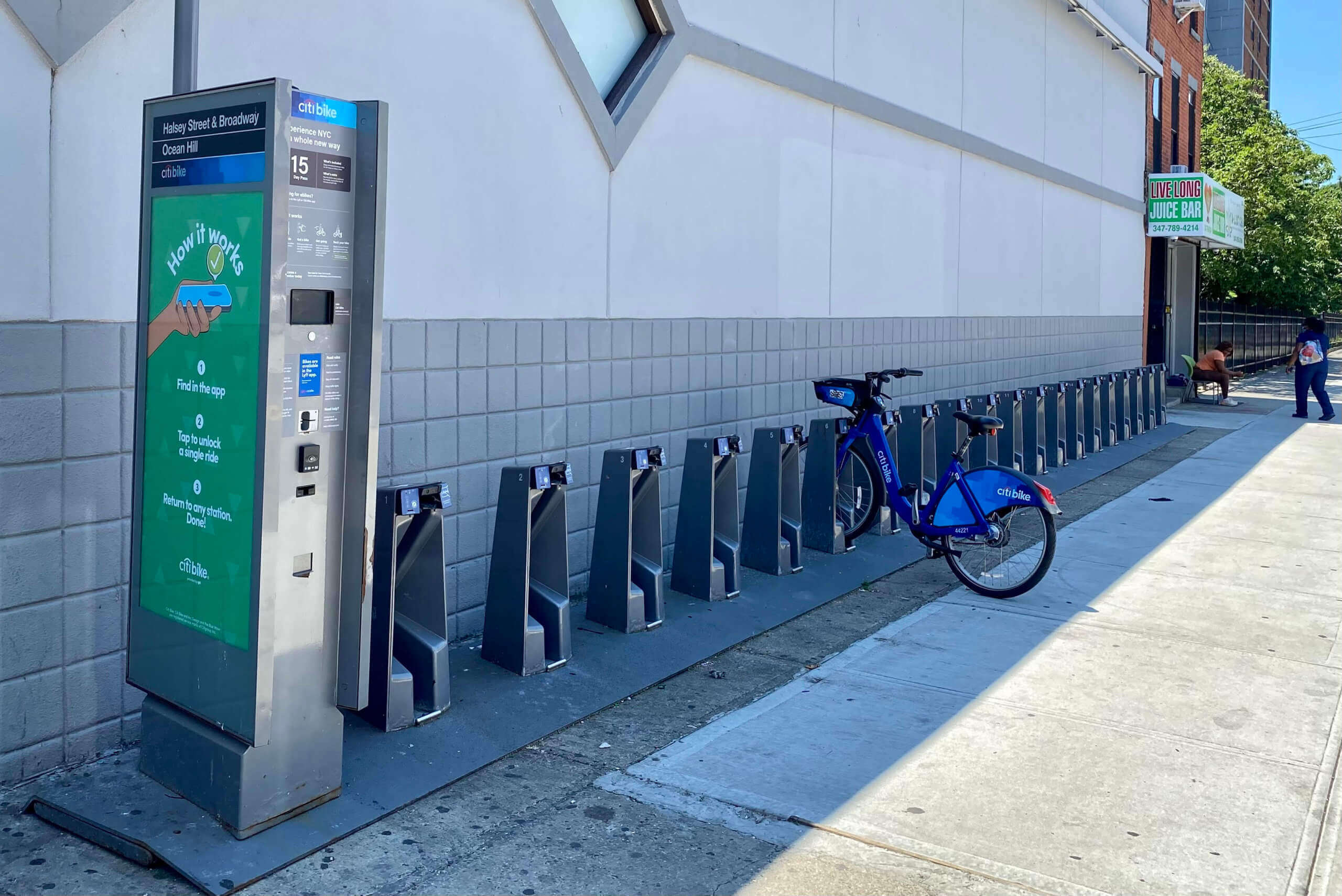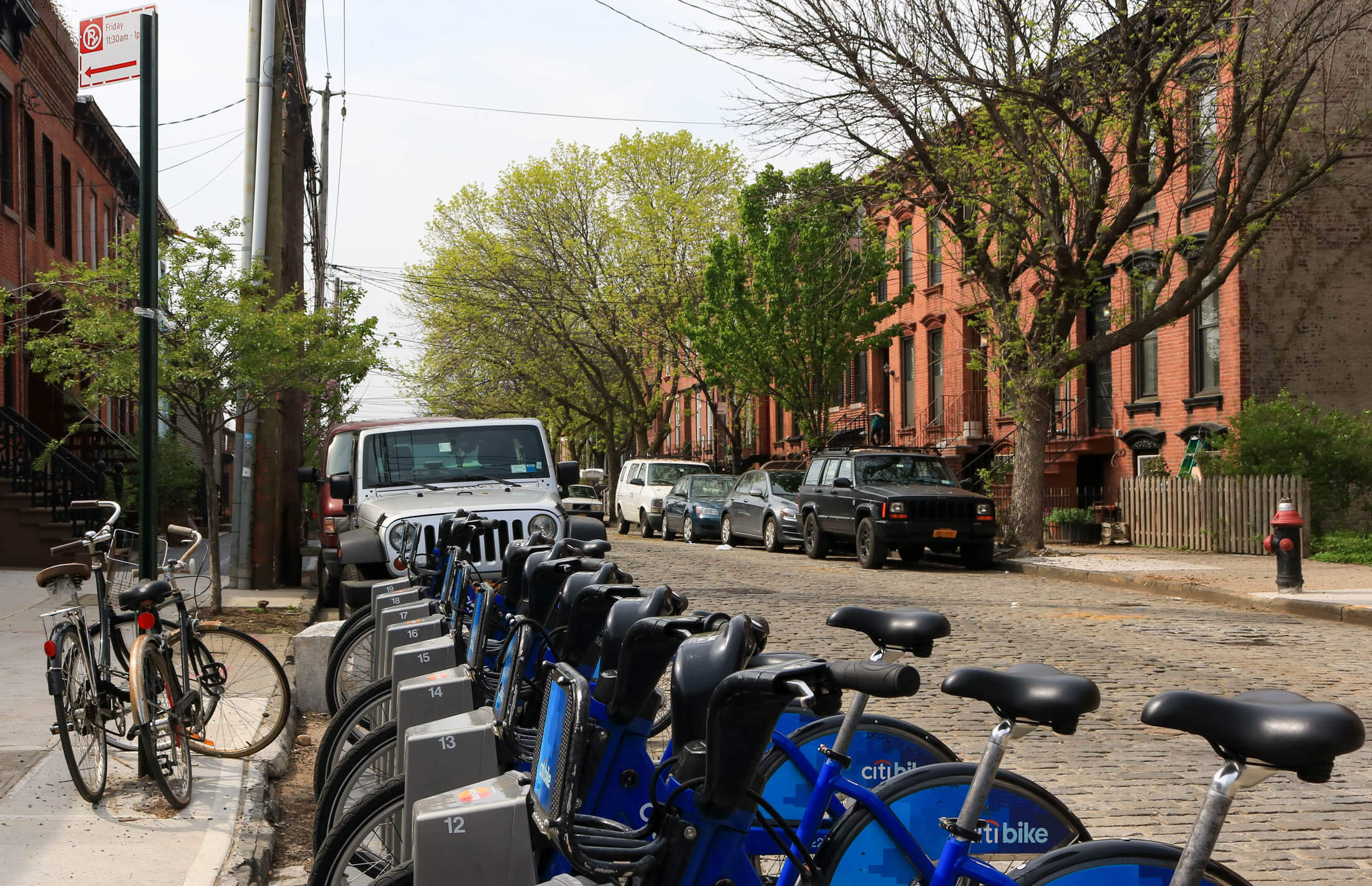More Than 100 New Citi Bike Stations Coming to Brooklyn
[ad_1]
Right after three decades of preparing, the Division of Transportation is established to get started do the job this drop installing about 120 new Citi Bicycle stations in parts of central and east Brooklyn that are presently Citi Bike deserts.
Some of the stands will be mounted on sidewalks and some others will be put in on the highway, draft maps launched by DOT demonstrate. The maps are nonetheless staying finalized, and a DOT rep advised Brownstoner that following remaining rounds of local community responses the current plans will be released at the conclude of summer months.
The stands will all be positioned in parts of Mattress Stuy, Crown Heights, Ocean Hill and Flatbush that are not now lined by the Citi Bike community all slide in just Local community Boards 3, 5, 8, 9 and 16. With a range of the stations getting mounted on the highway, selected streets will shed some parking spaces, while DOT did not confirm the quantity. A reduction of parking that has come with new Citi Bicycle stations has established controversial in some elements of the metropolis, while significantly less so in Brooklyn. The service’s expansion counters criticism the initial rollout favored wealthier, whiter sections of the borough.
citibike-draft-approach-map-bed-stuy-2022-DOT
citibike-draft-strategy-map-crown-heights-2022-DOT
citibike-draft-prepare-map-crown-heights-flatbush-2022-DOT
citibike-draft-program-map-ocean-hill-2022-DOT
Currently, there are no Citi Bike stations south of Lincoln Road in Flatbush or east of Rogers Avenue. In Crown Heights, there are none south of Atlantic Avenue, and in Bed Stuy there are none east of Lewis Avenue and a black west of Broadway in the pocket involving Fulton Road and Broadway.
The new stations will boost accessibility by generating a lot more bikes offered in additional places. In many cases stations on the outer edge of support locations have couple bikes out there, although in other much more Citi Bike saturated neighborhoods (this sort of as Williamsburg), stations can be packed to the brim, making it complicated to obtain a spot to park.

A lonely Citi Bike at Halsey Street and Broadway in Mattress Stuy. Image by Anna Bradley-Smith

A rack of bikes in Crimson Hook in 2017. Image by Susan De Vries
Section of Transportation Spokesperson Tomas Garita informed Brownstoner the DOT is operating hard to employ Citi Bike’s stage 3 growth, “increasing obtain to bike share in far more lower-revenue communities and communities of color.”
“We are working intently with our community associates to discover the most optimal locations to put new Citi Bicycle stations. On the completion of phase a few installations, much more than half of the city’s inhabitants will live inside the Citi Bike assistance region, bringing this vital source to disinvested communities.”
DOT began the growth organizing in 2019 to keep a dense and contiguous services region. Station areas had been determined via neighborhood enter (DOT gathered 775 general public reviews on the expansion) and complex siting, which took into account accessibility and sidewalk width, parking and truck loading, and proximity to road household furniture and underground utilities, DOT paperwork display. The stations are not hardwired into the floor and are solar driven and wireless.
Citi Bicycle initial released in Manhattan and Brooklyn in 2013 with 330 stations and 6,000 bikes. Among 2015 and 2017 it additional Queens to its community and elevated stations to 750, and bikes to 12,000. This third growth is growing solutions in Manhattan, Brooklyn and Queens, and is also taking Citi Bikes to the Bronx. The expansion will double the amount of bikes still all over again to 24,000, DOT paperwork clearly show.
To date, DOT docs say more than 140 million outings have been created on the bikes, and far more than 27 million of them transpired in 2021. Every single bike helps make an regular of five trips per day, and the service appeals to 100,000 every day journeys in peak riding months. In 2021, there had been 1 million exclusive riders, DOT docs say, and 160,000 annual customers. Single rides price $3.99 for 30 minutes and a day move is $15. Once-a-year memberships go for $185 and regular passes are $15 if a 12 months-extended motivation is produced.
NYCHA people and SNAP recipients can get memberships for $5 a month with no yearly determination, and Local community Growth Credit rating Union customers can also get $5 a month memberships, but with an annual motivation.
Relevant Stories
E-mail [email protected] with additional responses, thoughts or suggestions. Abide by Brownstoner on Twitter and Instagram, and like us on Fb.
[ad_2]
Resource url







